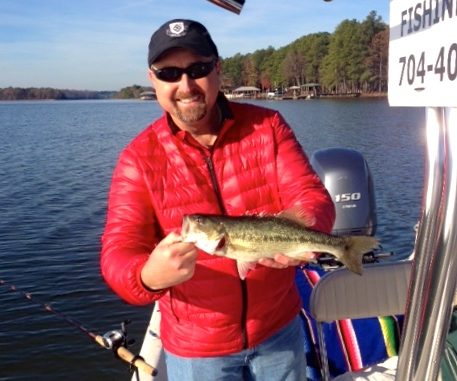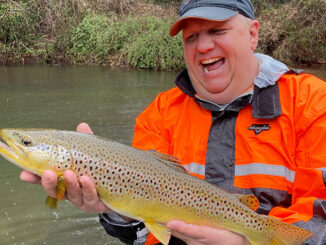
Cooling temperatures heating up fishing on Norman
Fishing for spotted bass on Lake Norman greatly improves in October as the water temperature gradually declines from the 80s into the lower 70s, according to Bob Curan of Bob’s Professional Fishing Guide Service.
“The spots will move into shallower water at the creek mouths, and topwater action will pick up in the mornings and evenings,” said Curan (www.fishinlkn.com).
While many fishermen target them with small crankbaits, soft plastics, tiny jigs and downsized Alabama rigs, Curan trolls live bait because he often caters to families with inexperienced anglers.
His trolling spread consists of four to six, medium-action 7-foot spinning rods with reels spooled with 10-pound monofilament line mounted on the gunwales and stern. He fishes live shad or alewives on a Carolina rig that features a 3-foot leader of 10- to 15-pound fluorocarbon with a small circle hook at the business end, hooked through the lip of the bait. He covers depths from 15 to 30 feet by using free lines and lines with split shot.
At times, Curan will tie a small crankbait or spoon on some rods to offer fish a variety of baits.
Before Curan begins trolling, he searches for spotted bass and baitfish with his electronics, usually close to humps and points around creek mouths. Productive areas include Mountain Creek, Little Creek, and the main lake near buoys 4 and 11.
“I look for broken pods of baitfish, because that’s a sign of feeding fish,” he said.
When Curan locates the fish, his passes through the area are likely to produce several spotted bass with each pass.
“Spots begin to school toward the end of the month,” said Curan, whose clients will catch an occasional largemouth or hybrid bass while trolling for spots.
Curan also keeps a number of spinning rods with Little Cleo spoons and small topwater baits tied on for breaking fish, especially in the mornings and evenings.
“Sometimes spots will thrash the surface in the heat of the day, so I’m always prepared for surface action,” he said. “When spots feed on the surface, they’ll hit just about anything that comes their way. I think if you placed a piece of tinsel on a hook the spots would hit it.”
Curan said Norman’s spotted bass run from 12 to 18 inches, but with spinning gear, they fight as if they’re much bigger fish.




Be the first to comment